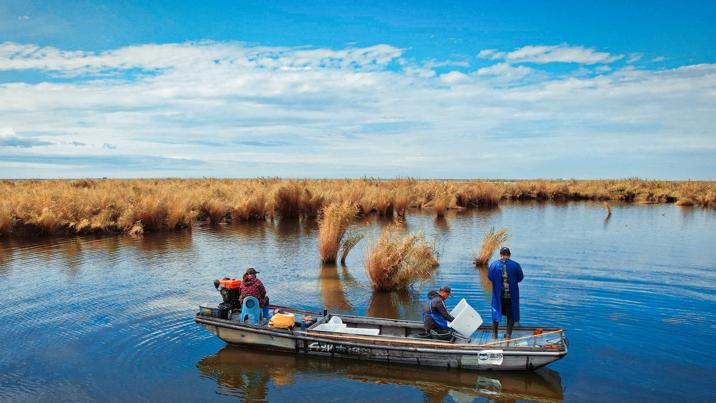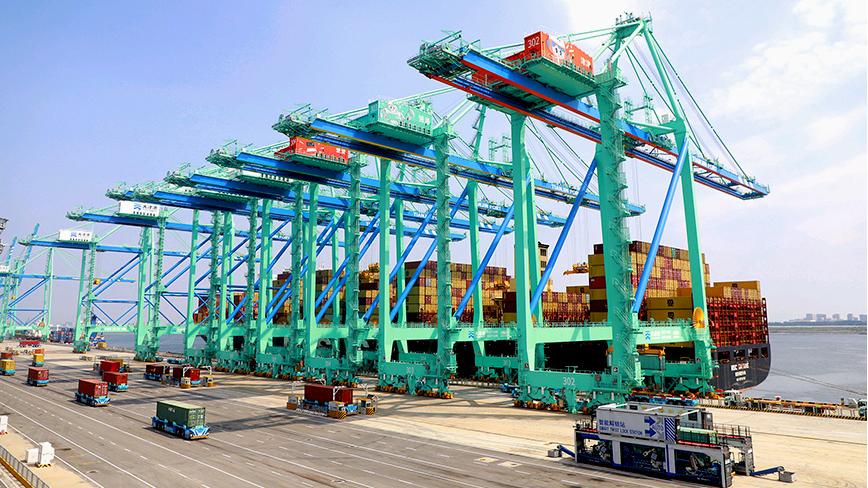Green transformation revives, improves traditional high-emission industries

This photo taken on Aug. 23, 2023 shows the Big Air Shougang in the Shougang Park in Shijingshan District of Beijing, capital of China. (Xinhua/Ren Chao)
BEIJING, Oct. 6 (Xinhua) -- Riding along Beijing's iconic Chang'an Street to the city's west, cycling enthusiasts have the chance to sip a cup of iced coffee and enjoy the grand view of steel furnaces at Shougang Park, a recreation destination that has been transformed from an area known for steel mills.
Echoing China's high-quality development drive, Shougang Park, where the Beijing Winter Olympic venue Big Air Shougang is located, is striving to act as a model of industrial zone revival, through the integration of industrial upgrading and green development.
RELOCATION, INNOVATION & TRANSFORMATION
Shougang Group, a leading heavyweight steelmaker in China founded in 1919, once posted an annual output record of 10 million tonnes.
As part of Beijing's economic restructuring and pollution control initiatives, Shougang Group started relocating its production base to the neighboring Hebei Province in 2005, where the steel conglomerate has managed to build high-end and eco-friendly iron and steel production lines.
Its steel-making operations in Beijing were halted in 2010, which left a large stretch of industrial heritage in the area. Deserted repair workshops, coking plants and shaft furnaces were renovated into a high-end industrial comprehensive service area integrating business, science and technology, sports, culture and tourism.
All completed buildings in this park satisfy the green building standard, and many sports events were held here.
Zheng Kai, a veteran who has been serving at Shougang Group since 2005, was deeply impressed by the stunning transformation of Shougang Park.
"When I go back to the park where I used to sweat to work, I realize that the rapid changes there are beyond my imagination," he said.
It is not only the original site of the steel giant that has undergone a transformation, but also its new factories in Hebei Province. These new factories feature production methods achieving both energy conservation and carbon reduction, setting up another model of green and low-carbon development.
The group has achieved 10 million tonnes of low-carbon steel production via a process of high-ratio pellet smelting, which transforms powdered iron ore into pellets in blast furnaces, thereby reducing carbon emissions.
"Energy consumption and carbon dioxide emissions during the iron and steel making process are major carbon contributors throughout the whole steel industry," said Teng Zhaojie, a senior researcher of the Shougang Group.
"It is a difficult mission for such a long process of steel and iron production to achieve carbon reduction," Huang Wenbin, an official with the Shougang Group, said. From 2016 to 2018, they carried out eight industrial experiments before finally achieving their goal of mastering high-ratio pellet smelting technology.
The proportion of pelletizing in super-large blast furnaces has reached more than 55 percent in the Shougang Group -- cutting carbon dioxide emissions by 10 percent per tonne of iron and lowering pollutant emissions by 53 percent.
In addition, Shougang uses efficient dust removal, desulfurization and denitrification technologies to reduce the emission of air pollutants. It will also complete a heat test in its zero-carbon furnace in Hebei this month.
"The green transformation of the group in terms of carbon trading, digital intelligence, ultra-low emission, energy saving and clean production was remarkable," Zheng said.

A technician checks the carbon capture, utilization and storage facility before operation at the Taizhou coal-fired power plant of China Energy Investment Corporation (China Energy) in Taizhou, east China's Jiangsu Province, June 1, 2023. (Photo by Tang Dehong/Xinhua)
CARBON CAPTURE
Like those of the Shougang Group, many other traditional coal-fired factories in China are undergoing a green transition by upgrading carbon reduction technologies.
During the China International Fair for Trade in Services (CIFTIS) in Beijing last month, Longyuan Environmental Protection Co., Ltd. under CHN Energy shared details of efficient recycling and carbon capture utilization and storage (CCUS) technology used in its power plants.
A CCUS project went operational at a power plant in Taizhou, east China's Jiangsu Province, in 2023. It was designed to capture approximately 500,000 tonnes of carbon each year.
China has nearly 100 CCUS projects in operation or under construction, with over half already operational, according to incomplete statistics. These projects have a combined annual carbon capture capacity of 4 million tonnes.
Efficient use of carbon capture technology can produce high value-added chemical products, reduce regional carbon emissions, increase social and economic benefits, and encourage a more harmonious relationship between power plants and cities, according to CHN Energy.
China has made historic breakthroughs in green and low-carbon development over the past decade, amid its quest for a sustainable future, a white paper issued in August stated. The country had reduced carbon dioxide emissions by 3 billion tonnes during the period from 2013 to 2023.
China has also worked to enhance the clean energy percentage of its total energy use, while the share of coal in its energy consumption dropped by 12.1 percentage points during the past decade.
Such progress comes as China continues its efforts to peak carbon dioxide emissions by 2030 and achieve carbon neutrality by 2060.
During the third plenary session of the 20th Central Committee of the Communist Party of China in July, China pledged to "prioritize ecological protection, conserve resources and use them efficiently, and pursue green and low-carbon development."?
Photos
Related Stories
- China makes vital contribution to global green development: experts
- China's role in global green transition draws expert praise
- Coal-to-green transition redefining China's west-to-east power transmission
- How a made-in-China refrigerator reduces carbon footprint
- China's big role in global green transition
Copyright © 2024 People's Daily Online. All Rights Reserved.









